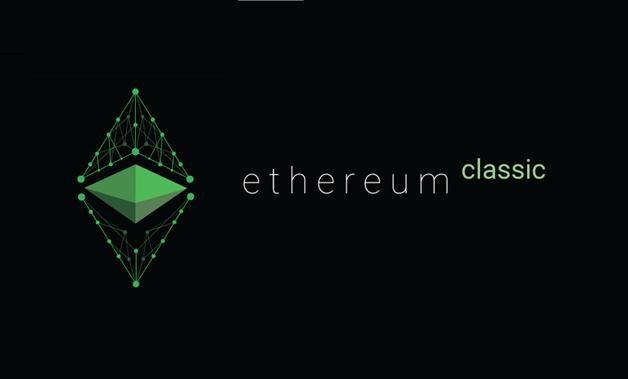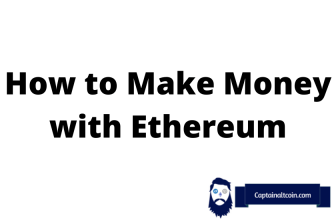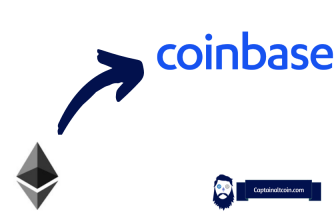In the recent time there have been so many new investors into the cryptocurrency world. It shows that the fear of missing out is on. But any beginner, after entering the digital currency market, will ask a question: What is the difference between Ethereum Classic and Ethereum?”.
Besides the name, two cryptocurrencies share a very interesting story that is of utmost importance in the history of digital currencies. The battle between Ethereum and Ethereum Classic is both an ethical and ideological one.
There used to be only Ethereum and since then $50 million was stolen by an unknown hacker or group of hackers which resulted in two different groups of people being formed in the world of cryptocurrencies.
We will show you the history of Ethereum and how it came to be as we know it today and how it differentiates from Ethereum Classic.
What you'll learn 👉
Explanation of Ethereum
Ethereum is an open-source, public, blockchain-based distributed computing platform featuring smart contract (scripting) functionality. Ethereum blockchain was first launched in 2015, after a prodigious team consolidated around Ethereum creator Vitalik Buterin.
Ethereum was developed as decentralized computer network where software developers could program any platform or DAPP (decentralized app).
The entire ecosystem of Ethereum works on the basis of smart contracts. The smart contract represents an automated contract that is stored in the blockchain and it executes when given criteria are met. Smart contracts are enforced and controlled by the blockchain that has a role of unbiased and objective third party to the transaction.
Due to the fact that smart contracts are automated and enforced, transactions and applications that are running on the Ethereum platform have become very attractive to wide variety of applications.
These decentralized apps (also know as DAPPs) have a lot of different functionalities and purposes and all of them using Ethereum platform.
In order to get a glimpse of numberless different DAPPs, you can take a glance at the State of the Dapps.
The Creation of the DAO
The DAO, also known as the Decentralized Autonomous Organization, was a complex smart contract which was going to revolutionize Ethereum forever. It was basically going to be a decentralized venture capital fund which was going to fund all future DAPPs made in the eco-system.
The creation of the DAO was the most significant event in the split between Ethereum and Ethereum Classic.
Basically, DAO was build in a way to give funders the power to choose which DAPPs are getting funded. The way it worked was pretty straightforward. If investors wanted to have any say in the direction DAPPS that would get funded, then you would have to buy “DAO Tokens” for a certain amount of Ether. The DAO tokens were indicators that you are now officially part of the DAO system.
In order to get the DAPPs approved they needed to get whitelisted by the curators who were basically known reputable figureheads in the Ethereum community. After getting their stamp of approval, they will get voted on by the DAO token holders. If the proposal gets a 20% approval in the vote, then they will get the required funds to get started.
The huge potential and the flexibility, control and transparency offered by the DAO was never seen before, so the people took their chances to get in on the action. 28 days after its creation, it raised over $150 million worth of Ether. At this period of time, it was 14% of all the Ether tokens issued to date.
So if you were one of the funders who did not want to fund the approved DAPP, you were offered an exit door that was called the “Split Function”. By using this function, you could get back the Ether you have invested and, if you so desired, you could even create your own “Child DAO”, which was basically a smaller version of the DAO. In fact, you could split off with multiple DAO token holders and create your own Child DAO and start accepting proposals. The only downfall was one condition in the contract that you had to hold your Ether for 28 days before you can spend them again.
Many users saw this as giant loophole in the DAO system. The creators of DAO assured that it will not be a problem. Well, it turned out that it was a big problem and it caused the process that split the Ethereum into Ethereum and Ethereum Classic.
Despite the fact that, at its peak, the DAO accumulated around $150 million by crow funding, it had some very serious security issues.
Someone exploited this very loophole in the DAO on 17th June 2016 and took away one-third of the DAO’s funds or around $50 million. Some reports claimed it was a hack, but you did not need mad skills to break into this badly guarded platform.
Plain simple said, the platform could be hacked by anyone with basic hacking skills.
Inside the DAO Hack
In order to exit the DAO, all you had to do is to send a request and the splitting function would refund your Ether in exchange for your DAO tokens. At the same time it would update the ledger with the transaction and update the internal token balance.
During the attack, what the hacker did was that they made a recursive function in the request, so this is how the splitting function went:
– Take the DAO tokens from the users and give them the Ether requested
– Before they could register the transaction, the recursive function made the code go back and transfer even more Ether for the same DAO tokens.
In order to fully highlight of how the big loophole was, just keep in mind that the recursive function was able to run until a one third of the DAO funds were stolen.
At this point of time, the DAO had a huge percentage of the total amount of Ethereum in existence. Almost one third of the DAO’s initial funds were stolen or around $50 million which drove the DAO and Ethereum communities into complete disorder.
Even though the hacker did take away $50 million worth on Ether, it was still sitting in the child DAO, and he couldn’t yet access them because the DAO smart contract explicitly stated that any of the invested Ether taken out of the DAO wouldn’t be accessible for 28 days.
With this in mind, they started looking for a speedy resolution to this issue.
The decision for a solution by the majority was that Ethereum needed to create a fork on the original blockchain, or to hold the blockchain completely and develop something new from the start. This part “something new” is what we now know as Ethereum (ETH). On the other hand, Ethereum Classic (ETC) remained using the original block chain as the name would suggest.
The decision to create a fork resulted in a division and controversy and despite the fact that a majority voted to fork the blockchain, there was a still important percentage (around 10%) of people that were fond of the original blockchain. The idea was to completely lock down the Ether that was stolen by the hacker by ignoring and segregating any blocks that contain a transaction which will help the hacker move around their stolen Ether. The fork was able to retrieve back the $50 million that was stolen.
The Distinction between Ethereum and Ethereum Classic
As it was said previously, Ethereum (ETH) operates on a brand new blockchain and the most of the users and protocols from the previous version of Ethereum use this new version.

Ethereum Classic (ETC) is running the same protocol doing a similar function, but inside its community it has some specific differences. Those 10% of people from the original blockchain remain mostly in the shadows and are loyal to the idea of the immutable ledger. The price of the ETC is primarily driven by the speculators, like many more alt-coins in the market.
On the other hand, Ethereum (ETH) has a goal to grow further and possibly have more forks in the near future. In the contrast of the Ethereum Classic, the leaders of the Ethereum community are more open to the public. The price of the ETH is mostly driven by speculators but also by its use of case scenarios and community support. For example, the Ethereum Alliance includes billion-dollar companies such as JP Morgan, Microsoft, Accenture and UBS. This has added some credit to ETH over ETC.
Both of the cryptocurrencies have some strengths and weaknesses, but if you look at the market capitalization ETH has the lead with $15 billion market cap versus ETC $1.5 billion market cap.
Different Ideologies
After this detailed description of the differences between Ethereum and Ethereum Classic, lets take a look between their ideological differences because of their importance in attracting communities. The community support is very important for each cryptocurrency as it defines their long term value.

Now, while Ethereum is in no shape or form to blame for what happened with the DAO, regardless, the incident shattered the beliefs that people had in cryptocurrency in general. The price of Ether plummeted from $20 to $13, and people were openly eulogizing.
The fact that the stolen $50 million of Ether was still on the hacker’s child DAO and can not be accessed for 28 days due to the DAO smart contract, it led to the decision to fork.
With this in mind the Ethereum community and team decided to take action and three potential solutions were pointed out:
- Inaction – Do nothing: Some people argued that making any changes will go against the very nature and underlying philosophy of Ethereum itself. After all, it is supposed to be immutable and “code is law.” But with $50 million being stolen gave a reason to the majority of people to vote for other solutions that were offered.
- Soft Fork: Soft fork gave you the choice whether you want to update or not, but regardless, the updated users and the non-updated users could still interact with each other. The idea was to completely lock down the Ether that was stolen by the hacker by ignoring and segregating any blocks that contain a transaction which will help the hacker move around their stolen Ether. This seemed like a great plan and majority of the Ethereum community was on board, but then a problem surfaced, a problem which brought the entire community to another predicament. Implementing a soft fork would result in a “Denial Of Service” (DoS) attack vector. The DoS attack meant the manipulation of how the miners are rewarded in the Ethereum world, thus the community chose to go with the Hard Fork.
- Hard Fork: The primary difference between soft and hard forks is that hard forks did not allow updated users and the non-updated users to interact. Once it is utilized, there is absolutely no going back whatsoever. If you do not join the upgraded version of the blockchain, then you do not get access to any of the new updates or interact with users of the new system whatsoever.
The majority of users voted for the Hard Fork…
The way the Hard Fork in Ethereum is supposed to work is that it’s a branch that separates from the main block chain at a particular point (in this case right before the DAO attack). Up until that point (block 1,920,000) the old chain and the new chain is the same, but immediately after the hard fork, the two chains become completely different entities. The new chain was named “Ethereum” or “ETH” for short.
Read also:
The DAO attack issue
Hard Fork was mostly formed to get back all the money that was stolen from everyone by the DAO via a refund smart contract which had the sole function of “withdraw.” Meaning that for every 100 DAO, 1 ETH will be given to the DAO token holders. This concept caused a massive controversy in the community, and there was a split. The people who were against the Hard Fork refused to update to the new blockchain and decided to remain loyal to the old blockchain naming it eventually “Ethereum Classic” or “ETC.”
“The single most important moment in cryptocurrency history since the birth of Bitcoin.” was stated by the co-founder of Ethereum Gavin Wood.
The idea behind the creation of Ethereum was to take a stand against financial corruption. The immutable blockchain was suppose to be corruption free. That is why the decision to Hard Fork split the Ethereum community. Hard Fork meant manipulating the blockchain and going against the very idea of the creation of Ethereum.
Those who still believe in the original ideology of Ethereum, they stuck with Ethereum Classic. Others stuck with the ETH in hope of survival and growth of the community. A natural antagonism remains between two groups as many anti-Ethereum people join the ETC community just to make the further split in the Ethereum community.
Not being backwards compatible with the ETH Hard Fork is the biggest issue for the ETC. Some of the big players on the market are using ETH. ETC users will not be able to enjoy the updates developed on the ETH, such as ETH move from Proof of Work to Proof of Stake.
Now that the Hard Fork has been used, many are speculating that more could come in the future. This presents a huge issue for ETH since the community can come to agreement to make changes in the price and future of the blockchain, once popular for its clear mathematical objectivity.
The formation of ETH goes against the idea of the immutability of the blockchain and the philosophy of “code being law.” In the eyes of anti-ETH folks, the hard fork was a cop out from Ethereum, and they should have accepted the main blockchain for what it was.
Another issue that was raised was how was anyone going to know for sure that no more hard forks were going to take place in the future subject to human whims? What if there are multiple hard forks creating different versions of Ethereum? What if there are hundreds of different versions of Ethereum running at the same time? Won’t that greatly devalue it and cryptocurrency in general? (Even though a majority vote of the Ethereum community would be required to make such monumental changes).
Conclusion
Ethereum ended up more popular for the majority of cryptocurrency supporters. The list of issues with ETH is mentioned with the goal of equality for both communities.
Besides the fact that ETH violated the immutability of the ledger, it showed the power to come together and resolve the worst hacking in the digital currencies history.
If it wasn’t for the Hard Fork, the Ethereum most probably would not survive to this day. Its power is derived from the community with it’s platform on which people can build projects which will dictate the future that could potentially change any industry. Ethereum Classic is marked with the unfortunate event of the DAO. The shortcomings of the DAO idea gave the birth of new and more powerful platform.
As of right now, ETH is nearly 15 times more valuable than ETC, and it really isn’t going to get any better. Plus, the fact that ETC is known to be full of scammers only reduces the trust that people have in it, which in turn reduces its value.







